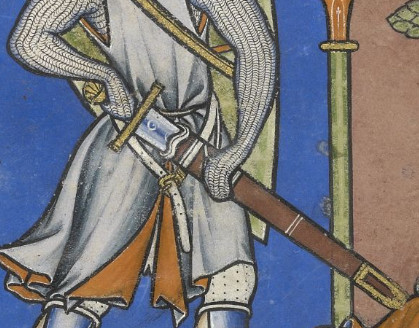Thursday, June 15, 2023
What did Louis IX look like?
Medieval Swords
\
Detail of a sword being drawn from its scabbard, Morgan Bible fol. 28v, c. 1250.
So, it turns out not only are rapiers not options for my early 13th century characters, but so are longswords--but that's good news, as the knightly arming sword that was in use at the time, is just what the story needs:
"a straight, double-edged weapon with a single-handed, cruciform (i.e., cross-shaped) hilt and a blade length of about 70 to 80 centimetres (28 to 31 in)." (C.f. above link to straightforward wikipedia page).
And Renaissance and following ages' innovations notwithstanding, apparently people are still interested in this kind of weapon, and have provided interesting feedback on how it works as a wepaon (or at least how a modern replica feels to a swordsman).


